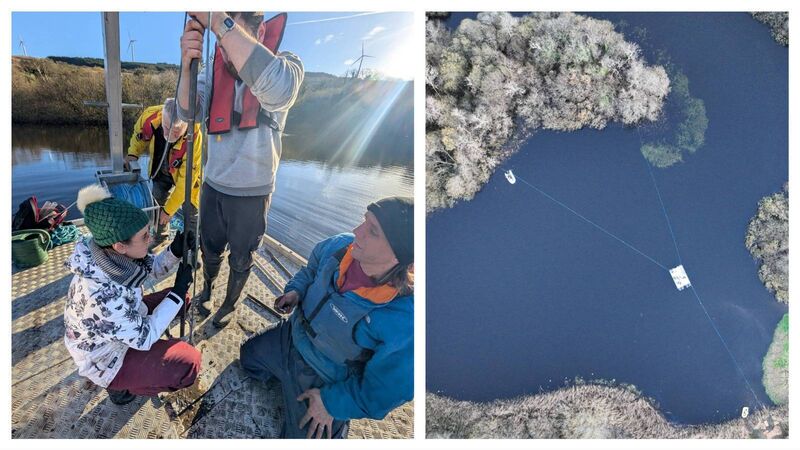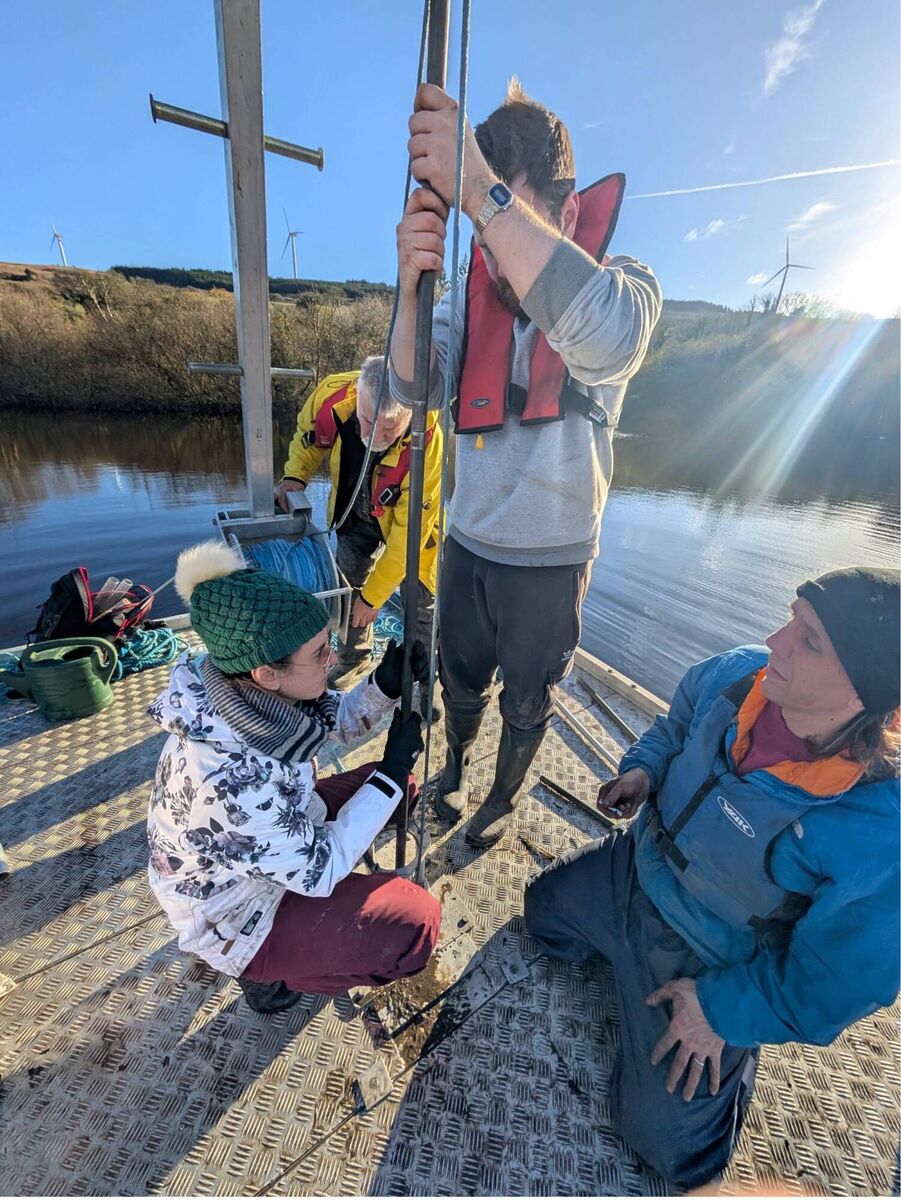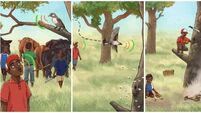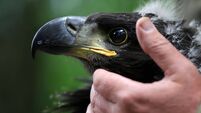16,000 years’ worth of stories to uncover from sediment in a West Cork lake

Robin Lewando and Dr Michelle McKeown (University College Cork), Dr Aaron Potito (University of Galway), and Dr Andrew Tighe (University College Dublin) collecting the sediment core at Three Lakes, County Cork. Pictures: Sarah Jane Power (University College Dublin) and Cathal Gannon (University College Cork)
If I told you that one of Ireland’s most remarkable libraries has no bookshelves, no reading room and no librarians — only mud — you might think I’d lost the plot. Yet deep in the sediments of a quiet lake in West Cork lies thousands of years of environmental change, written not in ink but in the sediment layers. Stay with me.
Three Lakes, tucked between Dunmanway and Drimoleague, may look unassuming at first glance, but beneath its calm surface rests an extraordinary archive: a long, continuous record of everything that has lived, died, grown, shed, bloomed, swum, or decomposed in the catchment since the last ice age. And thanks to advances in ancient environmental DNA, we can now begin to read this archive in ways that were impossible even a decade ago.
This work forms the heart of Robin Lewando’s PhD project at the Geography Department UCC and funded by Research Ireland.

Just last week our small team set out onto the water to retrieve the first sediment cores from the lake. Though we are only at the beginning of this research journey, even these early cores promise an exceptional window into Ireland’s past biodiversity.
Every living organism loses tiny fragments of itself to the environment. Plants release pollen and leaf fragments. Fish shed scales. Mammals drop hairs and microbes. Even algae and fungi constantly cast microscopic particles into the water. Each of these fragments contains DNA, the molecular instruction manual for life.

In a lake like Three Lakes, much of this genetic material sinks to the bottom and becomes sealed within layers of sediment. Over hundreds, thousands, even tens of thousands of years, these layers accumulate into a surprisingly detailed, if decidedly muddy, record of past life. Scientists call these traces sedimentary ancient DNA, or sedaDNA, and they allow us to reconstruct past ecosystems with extraordinary precision.
Although our analysis has only just begun, sedaDNA from lakes like this typically reveals the pioneer plants that first colonised the land as the ice retreated, along with the hardy animals able to survive such exposed conditions. As the climate warmed, forests of birch, hazel, oak and elm took hold. SedaDNA helps us understand just how rich and dynamic these early woodlands were before significant human influence.
One of the strengths of sedaDNA is its ability to detect animals that rarely leave behind fossils. Fish, birds, amphibians and mammals all shed microscopic fragments of DNA, allowing researchers to identify which species lived in or visited the valley across thousands of years.
Some species, however, remain elusive. The famous Irish elk has yielded ancient DNA from its bones but has not yet been detected in Irish lake sediments. Whether Three Lakes holds traces of such extinct species is an open, and fascinating, question.
As humans appear in the record, sedaDNA can identify livestock grazing in the catchment, early crops planted by farmers, and how the valley’s ecosystems shifted in response to changing climate and land use.

Three Lakes is modest in size, but its enclosed basin means that much of the DNA accumulating in its mud reflects what was happening within the catchment itself. This makes it an excellent environmental diary.
Equally valuable is the continuity of its sediments. Early descriptions of the cores show no major gaps. No missing chapters in the story.
Instead, the sediment forms a clear, unbroken timeline, from barren post-glacial landscape to the great woodlands that once covered Ireland, through the spread of farming and into the present day. For a sedaDNA study, this is as close to ideal as it gets.
We often discuss restoring nature but rarely pause to consider what the baseline should be. Ireland’s landscapes have been shaped by people for millennia, and without long-term records it is easy to assume that what we see today is natural or inevitable.
SedaDNA offers a deeper perspective. It shows how ecosystems responded to past climate swings, whether they recovered or flipped into new states, and which habitats proved resilient.
It also reveals how the surrounding environment reacted to periods of drought, storminess, and warming, insights that matter profoundly as Ireland faces increasing climate extremes.

Three Lakes may appear peaceful from the shore, but its sediments hold one of the most complete environmental records in Ireland.
Our work has only just begun, yet what lies beneath could reshape how we understand past ecosystems and how we protect those of the future.
As the cores are processed and the DNA revealed, the lake’s long, silent memory will finally have a voice, and it has around 16,000 years’ worth of stories to tell.









